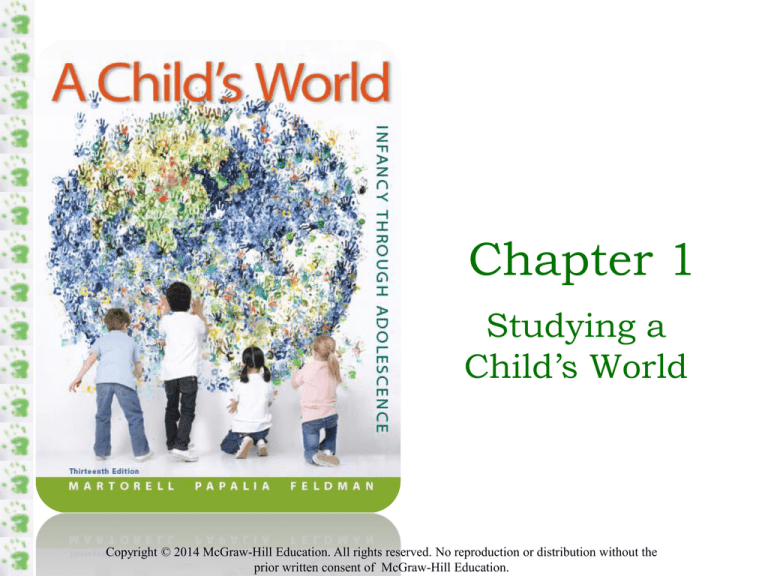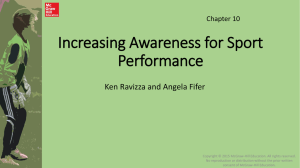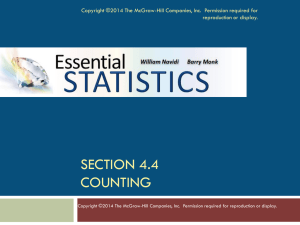
Chapter 1
Studying a
Child’s World
Copyright © 2014 McGraw-Hill Education. All rights reserved. No reproduction or distribution without the
prior written consent of McGraw-Hill Education.
Early Approaches to Child
Development
Child development
Scientific study of processes of change and stability in
children from conception through adolescence.
Early approaches
Baby biographies – First recorded in 1787.
Darwin’s journal - 1877
Development
Scientific respectability
30 more in next three decades
Copyright © 2014 McGraw-Hill Education. All rights reserved. No reproduction or distribution without the
prior written consent of McGraw-Hill Education.
1-2
Developmental Psychology:
A Science
Early 20c
Infant survival
Protecting children
Adolescence
Understanding influences on children
Establishment of research institutes
Emergence of child psychology as a true science
Gesell’s studies on stages in motor development
Copyright © 2014 McGraw-Hill Education. All rights reserved. No reproduction or distribution without the
prior written consent of McGraw-Hill Education.
1-3
Domains of Development
Physical development:
Growth of body and brain
Cognitive development:
Pattern of change in mental abilities
Psychosocial development:
Pattern of change in emotions, personality, and social
relationships
BioPsychoSocial Development
Copyright © 2014 McGraw-Hill Education. All rights reserved. No reproduction or distribution without the
prior written consent of McGraw-Hill Education.
1-4
Periods of Development
Prenatal period
Conception to Birth
Infancy/Toddler
0 – 3 years
Early childhood
3 – 5/6
Middle and late
childhood
5/6 – 11/12
Adolescence
11/12 – 20
Copyright © 2014 McGraw-Hill Education. All rights reserved. No reproduction or distribution without the
prior written consent of McGraw-Hill Education.
1-5
Influences on Development
What makes each child unique?
Primary challenges in developmental psychology:
Identify the universal influences on development.
Apply influences to the understanding of individual
differences in developmental trajectories.
Heredity
Environment
Socialization
Maturation
Copyright © 2014 McGraw-Hill Education. All rights reserved. No reproduction or distribution without the
prior written consent of McGraw-Hill Education.
1-6
Contexts of Development
Family
Nuclear vs. Extended
Culture and Race/Ethnicity
Socioeconomic Status (SES)
Historical Context
Copyright © 2014 McGraw-Hill Education. All rights reserved. No reproduction or distribution without the
prior written consent of McGraw-Hill Education.
1-7
Normative vs Non-Normative
Influences
Normative Influences
Similar way for most people in a group.
Age-graded
History-graded
Cohort
Non-normative Influences
Unusual event that happens to a particular person.
Typical event that happens at an unusual time of life
Copyright © 2014 McGraw-Hill Education. All rights reserved. No reproduction or distribution without the
prior written consent of McGraw-Hill Education.
1-8
Timing of Influences
Biologically Controlled
Imprinting
Critical period
Sensitive periods
Plasticity
Copyright © 2014 McGraw-Hill Education. All rights reserved. No reproduction or distribution without the
prior written consent of McGraw-Hill Education.
1-9
An Emerging Consensus
All domains of development are interrelated.
Normal development includes a wide range of individual
differences.
Children help shape their development and influence others’
responses to them.
Historical and cultural contexts strongly influence development.
Early experience is important, but children can be remarkably
resilient.
Development in childhood affects development throughout the
life span.
Copyright © 2014 McGraw-Hill Education. All rights reserved. No reproduction or distribution without the
prior written consent of McGraw-Hill Education.
1-10












